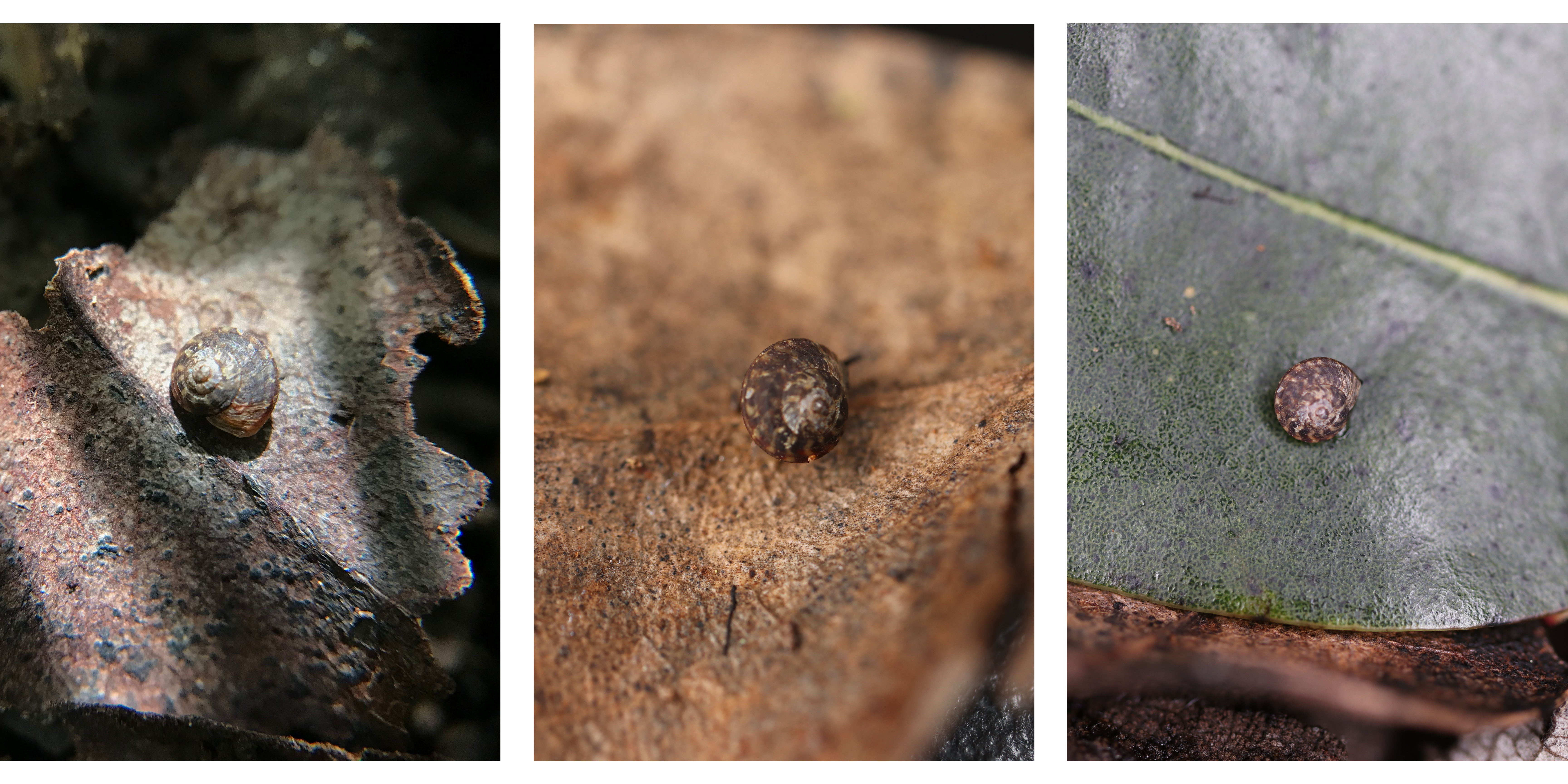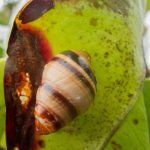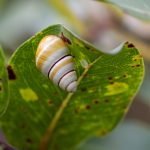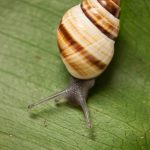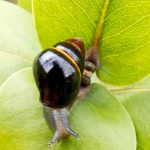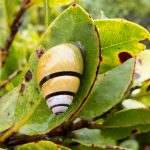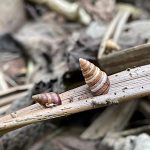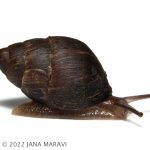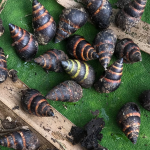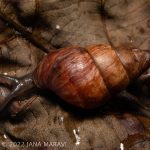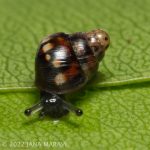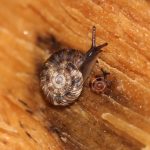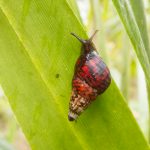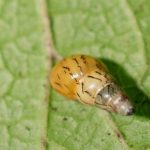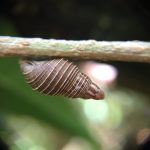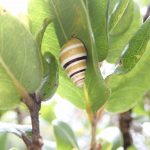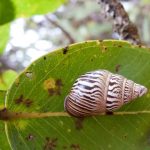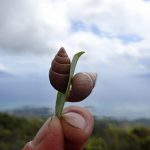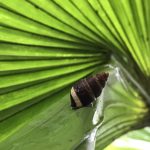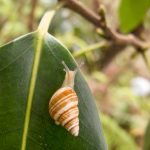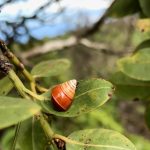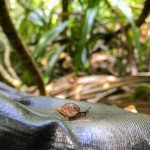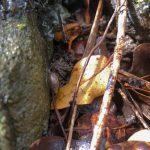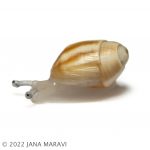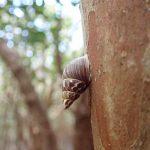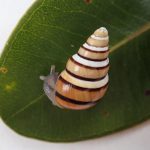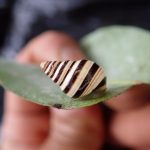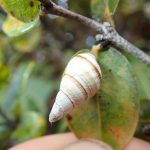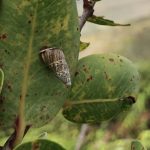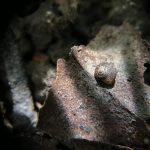Meet the Snails
Hawaii’s extant native snails present a great diversity of fascinating morphologies and behaviors. From ground-dwelling snails that function as Hawaii’s primary native detritivores and conceal themselves as nubs of dirt to arboreal phyllosphere grazers decorated with colorful stripes, there is certainly much to marvel over. If you are interested in learning more about particular families or species please explore using the navigational buttons below.
The Families
Below is a brief introduction to the 10 land snail families present in the Hawaiian Islands, listed from most speciose to least.
Amastridae
The family Amastridae is the most speciose family in the islands with 325 described species. Even more special is the fact that the entire family is endemic to the Hawaiian Islands. In general, Amastrids are considered to be ground dwelling or semi arboreal, and they are detritivores, feeding on dead and decaying leaves of native plants. Unfortunately this entire family has experienced catastrophic levels of extinction. today less than 20 species remain, and all are on the verge of extinction.

The following pages describe SEPP priority species in the family Amastridae:
Achatinellidae
All 209 described species in the family Achatinellidae are endemic to the Hawaiian Islands, however other species in this family occur throughout Oceania. In general all species are cone-shaped and range in size from some of Hawaii’s smallest land snails at 2mm, to some of our largest at over 22 mm. This is perhaps the most well-known family because Achatinelinae, a sub-family within the Achatinellidae, contain all three genera of large arboreal tree-snails of which 44 species are listed on the U.S. Endangered Species List. The family is diverse with both arboreal and ground dwelling species. While the large tree snails give live birth, other smaller species such as those in the genus Auriculella lay eggs.

The following pages describe SEPP priority species in the family Achatinellidae:
Euconulidae
These flat round snails with a shell diameter of 3-10 mm resemble cinnamon buns, and can be found on the ground and in the vegetation. The Hawaiian Islands have 60 described species, but the family is distributed globally. Interestingly, the shells of the Euconulids are translucent, so the colors you see on the shell are actually the snails organs and body showing through.

Succineidae
Hawaiʻi has 42 endemic species in the globally distributed family Succineidae. These snails range in size from approximately 5-12 mm and are both arboreal and ground dwelling and lay large gelatinous egg masses. Locally, these snails are known as “Snot in a Hat,” because their large body often does not fit inside their small-flat shells. These are some of the most commonly observed snails along upper elevation hiking trails.

Endodontidae
The Endodontid family is endemic to Oceania with 33 described species from the Hawaiian Islands. Little is known regarding habitats or life history of this group as almost the entire family has gone extinct from the Hawaiian Islands. Today only three species are known to occur, two species in the genus Cookeconcha from Oʻahu, and one species in the genus Endodonta from the Northwestern Hawaiian Island of Nihoa. This group is extremely imperiled.

The following pages describe SEPP priority species in the family Endodontidae:
Pupillidae
Pupillidae is a globally distributed family with 56 species endemic to the Hawaiian Islands. All species within this family are considered micro-mollusk with adult shell sizes being less than 3 mm. These tiny snails often go unnoticed as without a microscope they look like a grain of sand. However, under the microscope you will see that these snails have very textured, domed shells with whorls often stacking on top of one another resembling a bee hive.
The following pages describe SEPP priority species in the family Pipillidae:
Helicinidae
14 species of Helicinidae are endemic to the Hawaiian islands, although the family is distributed globally. Interestingly, this family is operculate, having a small “door” or hard piece on its foot that allows the animal to seal up tight, A common feature of inter-tidal and marine snails. The operculme protects the snails from predators and from drying out. Species can be both arboreal and ground dwelling.
The following pages describe SEPP priority species in the family Helicinidae:
Zonitidae
All 14 Hawaiian endemic species of this globally distributed family have small glassy shells approximately 2-10 mm in size. Little is know about these Hawaiian species.
Hydrocenidae
There are two species of this family endemic to Hawaii. Representatives of hydrocenidae are distributed across the globe yet little is known about them. Like their helicinidae cousins, this family is operculate–a common morphological trait of inter-tidal and marine snails–allowing them to thermoregulate and defend themselves against predators. These members are herbivorous grazers feeding on detritus, algal spores, mosses and lichens. Hydrocenidae are petite measuring less than 10mm in diameter and less than 5mm in height.
Punctidae
Punctidae, commonly know as “dot snails”, have one Hawaiian representative of which little is know about this species. As their common name alludes, members of this family are minute in size. They live amongst the leaf litter in forests feeding on detritus.
The Priority Species
SEPP prioritizes efforts on rare to critically endangered terrestrial snail species. Our priority species are described below by island. Click on any snail to learn more about it.
Kaua‘i
Kaua`i was once home to land snails of the Carelia genus which included the largest terrestrial snails endemic to Hawai`i measuring up to 3 inches in length. Unfortunately, members of this genus have not been seen since the mid-1900s and are therefore no longer under the care of SEPP.
O‘ahu
Moloka‘i
|
|
|
|
|
|
|
|
|
|
Lana‘i
|
|
|
Maui
|
|
|
|
|
|
|
|
|
|
|
|
|
|
|
|
|
|
|
|



